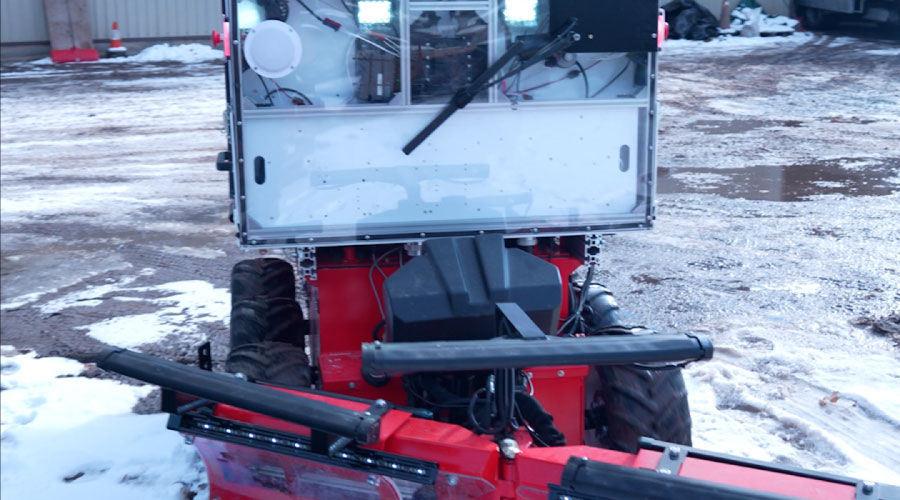Utility Vehicles go green(er)
Environmental considerations force grounds managers to specify sustainable utility vehicles that can get the job done
As green awareness continues to surge in commercial and institutional facilities, grounds managers face an important question when specifying utility vehicles: How does someone balance utility vehicles’ appealing characteristics — power, towing and hauling capacity, and speed — with environmental friendliness? The answer is not simple or clear-cut. It’s a complex issue that depends on technological advancements, cost and availability.
Grounds managers face growing pressure to reduce emissions, limit noise and stay within a budget. Alternative fuels and other technological improvements help an organization meet its sustainability goals. But do these products allow equipment operators to do their jobs in a timely, cost-effective manner?
That’s a question manufacturers address when assessing their current and next-generation line of utility vehicles.
Emissions and Noise
An electric utility vehicle can provide many of the green benefits — no emissions and virtually no noise, in particular — managers are looking for. Greg Breckley, marketing manager for Columbia ParCar Corp., says some managers believe all electric vehicles have only the power of a golf cart. Once managers overcome that misconception, they are more open to an electric-powered product.
“We’ve made a big push into the electrical-vehicle market,” Breckley says. “It really represents about 90 percent of our business on a daily basis. The internal-combustion (engine) has just tapered off year after year just because so many managers really want to be more efficient. And that electric vehicle is so much more efficient.”
Manufacturers also are addressing emissions and noise concerns in their gas- and diesel-powered utility vehicles. For example, Jacobsen offers gas engines that are carbon-compliant and support ethanol, says Brian Melka, director of product management at Jacobsen. The company’s diesel engines also support B5 bio-diesel, Melka says.
“Even with the existing technologies today, we have a big emphasis on continuing to try to make them more environmentally friendly,” he says.
Along with emissions, Melka says Jacobsen is using standard technology to address noise concerns.
“Along with some of the tier-three, tier-four compliance (with the
U.S. Environmental Protection Agency) is a catalytic converter,” he says. “So it’s going to require us to put catalytic converters on our machines at some point, which by default lowers the noise level. We work a lot with our muffler technology to try to reduce our sound as much as possible. Sometimes, it’s as simple as pointing it in a different direction.”
Dan Muramoto, product manager with Kubota Tractor Corp., says factory-integrated cabins and sound insulation provide enough enclosure to meet sound levels within the
Occupational Safety and Health Administration’s noise-exposure guidelines.
Power vs. Range
When deciding whether to specify a gas- or electric-powered utility vehicle, managers also need to consider the difference between power and range. Power refers to hauling and towing capacity and the ability to climb hills, while range refers to the length of time a vehicle’s power lasts.
“The electric utility vehicle can accomplish the same jobs with the power that the gasoline vehicle can accomplish, but (we tell customers) not to have the same expectation for range,” says Wade Tollison, marketing manager at the Toro Co. “It’s not going to run all day long, like a gasoline utility vehicle would.”
That difference can be a problem for grounds managers who need to complete their tasks in a timely fashion. Few departments can afford to park the electric vehicles for several hours to charge the battery.
Beyond Power and Emissions
A utility vehicle’s power source and emissions output aren’t the only green considerations managers need to address. For example, manufacturers are focusing on the fluid used in the vehicles’ hydraulic systems.
“We factory-fill them with biodegradable hydraulic fluids,” Melka says. “If there is a leak, and hydraulic equipment at one time or another will leak, you can simply wash it down, and it breaks away in the soil. It doesn’t harm the environment at all.”
Grounds managers also are becoming more concerned about what materials are used in the manufacturing of the product.
“Post-consumer content is a big thing for us, and we have a big push to determine the amount of post-consumer content we have,” Breckley says. “We try to use recycled materials as much as possible. We use recycled steel for the frames. We use recycled milk cartons to make this part for our deck board.”
Battery Technology
To address the range challenge for electric utility vehicles, manufacturers are monitoring the newest battery technologies that will give the electric vehicles sufficient power for an extended period of time.
“We’re aggressively looking at what the battery technology is we can use to extend the range of the (vehicle),” says Dana Lonn, director of Toro Co.’s Center for Advanced Turf Technology.
Lonn believes nickel-metal hydride and lithium are the two battery types manufacturers will look at closely as a substitute for the lead-acid technology in many utility vehicles. The problem with the nickel-metal hydride and the lithium is cost. Lonn says the nickel-metal-hydride battery is more expensive than the lead-acid, and the lithium cost is higher than both of the others.
Cost isn’t the only issue. A primary problem with the nickel-metal-hydride batteries is the world doesn’t have enough nickel to make them a long-term solution, Lonn says. He says nickel-metal hydride could serve as a transition from the lead-acid technology, but lithium is more likely to be a long-term option. But Lonn says the lithium batteries have charging issues, so equipment operators need to closely monitor the battery’s temperature and state of charge. As with many of the green considerations surrounding utility vehicles, managers in some parts of the country are more interested in this new battery technology than others.
“It’s certainly geographically dependent,” Tollison says. “You see in certain areas that governments are taking a leadership role — such as New York, and California is another one — where emissions are a leading concern.”
Next Generation
While battery technology continues to evolve, grounds managers also are interested in alternative fuels used in utility vehicles. Fuels such as bio-diesel, propane, and ethanol will pique the interest of managers facing pressure to become more environmentally responsible and less reliant on traditional gas-powered machines.
“Bio-diesel, I think, certainly is not only here, but it’s growing pretty substantially,” Melka says. “I think the support for that project continues to grow.”
Lonn believes bio-diesel and electric vehicles are the most immediate alternative-power sources, at least for now. But, as in the battery technology, geography plays a role in what alternative fuels will have the biggest impact.
“With the different variations of fuel that are out there, it’s a bit scattered,” Tollison says. “You’ve got certain areas trending towards propane; you’ve got others that are trending towards bio-diesel or even ethanol.”
Tollison and Lonn say ethanol is available in Midwest states but not as much throughout the rest of the country. Also, Lonn says ethanol will be tough for the utility-vehicle market to adjust to because most vehicles use carborated engines, not fuel-injected engines, which are better suited for ethanol. This situation is an example of the technology needing to catch up to the fuel source before it becomes widely available and widely used.
Lonn and Melka agree that hybrid technology might be the most promising alternative-fuel source on the horizon. In a hybrid, an engine and a generator supplement the electric-powered machine, reducing emissions and fuel use. Lonn says fuel-cell technology could replace the engine-and-generator portion of hybrid technology. He doesn’t think this technology will be available next year, but it’s not five years away, either.
Staying in Touch
Regulations affecting utility vehicles and most other grounds equipment are constantly changing at the federal, state and municipal level. Individual organizations also are establishing their own rules as to what types of vehicles managers can purchase for use at their facilities. That means manufacturers have to monitor these changing guidelines, ensuring their new products meet varying regulations at all levels.
“For us, it’s really important that we have our dealer network plugged into that,” Breckley says. “As a manufacturer, we try to stay on top of stuff. But really, the first line of defense is our dealer network.”
Tollison says Toro works together with industry groups to track these new regulations, and Jacobsen is part of a larger company that has what Melka calls a watch group in Washington, D.C., to monitor pending changes. Whatever the method, manufacturers are keeping an eye on the trend toward environmentally friendly utility vehicles.
Says Melka, “We’ve been focused on this for quite a long time.”
Related Topics:











